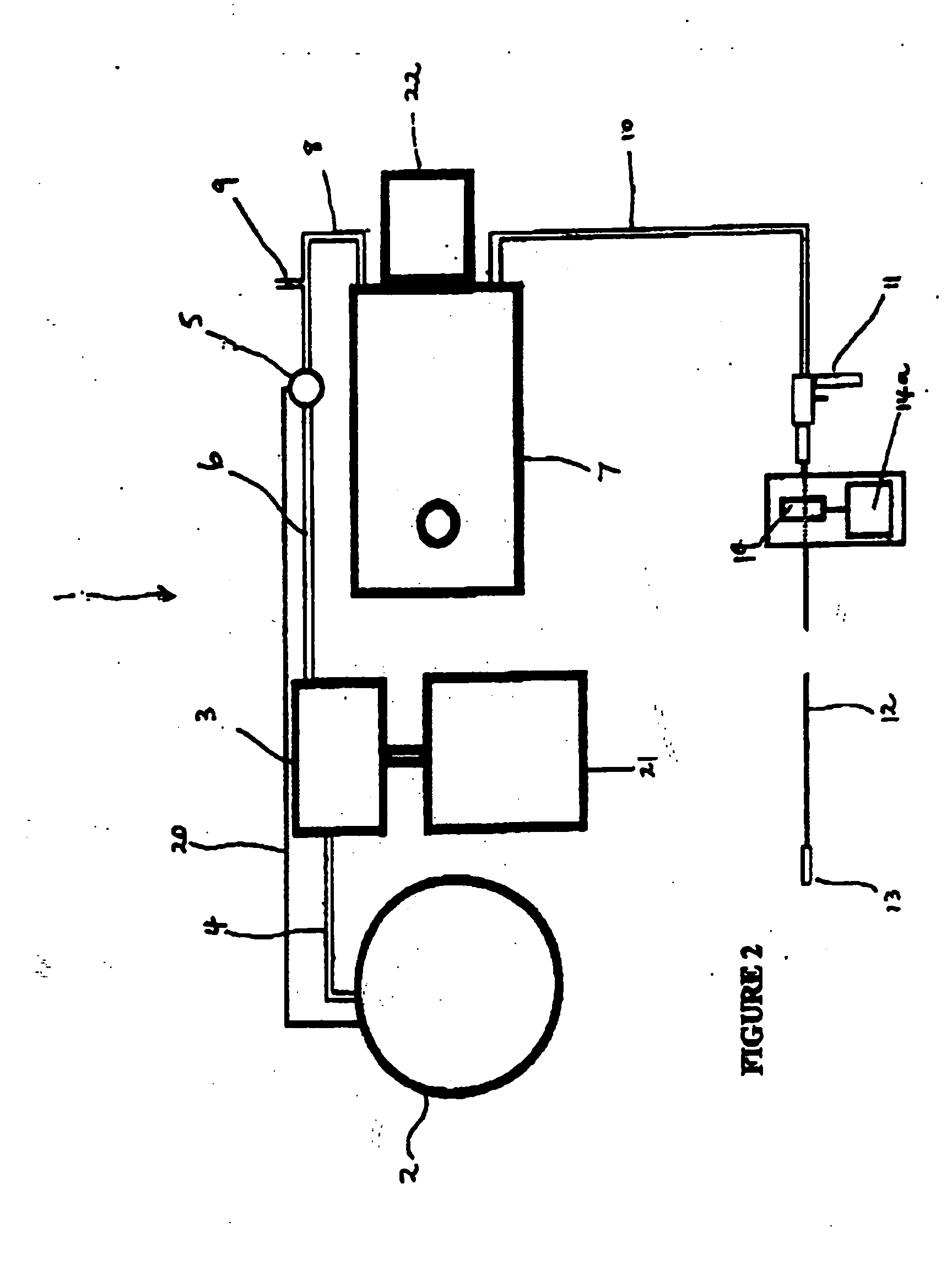Food line cleaner
a technology for cleaning equipment and food lines, applied in the direction of cleaning hollow articles, dairy products, chemistry apparatus and processes, etc., can solve the problems of high bacteria counts in dairy farmers' milk supply, adversely affecting commercial returns, and exposing milk consumers to unhealthy levels
- Summary
- Abstract
- Description
- Claims
- Application Information
AI Technical Summary
Benefits of technology
Problems solved by technology
Method used
Image
Examples
Embodiment Construction
[0081] Referring to FIG. 1, there is shown a preferred embodiment wherein the milk line apparatus (1) takes the form of a mobile unit. Usually the mobile unit is understood to be a truck or trailer type conveyance on which the milk line cleaning apparatus can be easily transported for practical use at a designated site.
[0082] The milk line apparatus (1) includes a reservoir of cold water (2) which water is ordinarily pretreated to remove sedimentary material which often gives rise to undesired deposits on pipe walls. The water from the reservoir is pumped under low pressure to a high volume / high pressure station (3) by way of first connecting (4). The high pressure pump (3) is driven by a petrol or diesel motor (although not limited thereto) (21) which increased the water pressure flowing to a water pressure control unit (5) via connecting (6). The control unit (5) serves to allow excess water to flow back into the reservoir (2) under normal operating condition. When the water flow...
PUM
 Login to View More
Login to View More Abstract
Description
Claims
Application Information
 Login to View More
Login to View More - R&D
- Intellectual Property
- Life Sciences
- Materials
- Tech Scout
- Unparalleled Data Quality
- Higher Quality Content
- 60% Fewer Hallucinations
Browse by: Latest US Patents, China's latest patents, Technical Efficacy Thesaurus, Application Domain, Technology Topic, Popular Technical Reports.
© 2025 PatSnap. All rights reserved.Legal|Privacy policy|Modern Slavery Act Transparency Statement|Sitemap|About US| Contact US: help@patsnap.com



